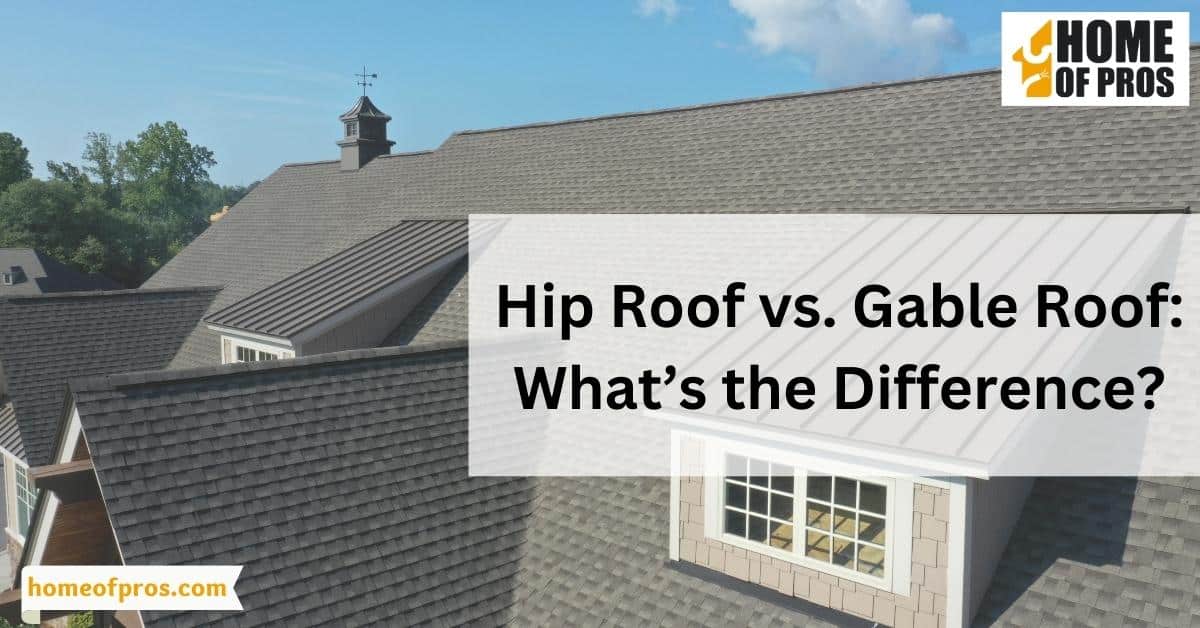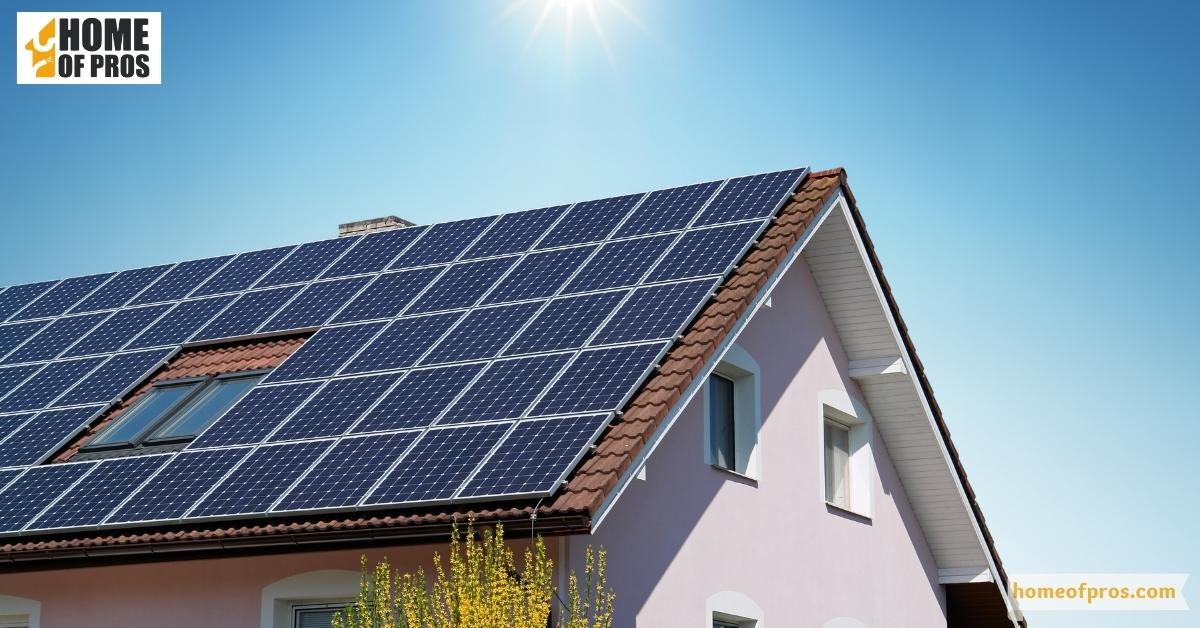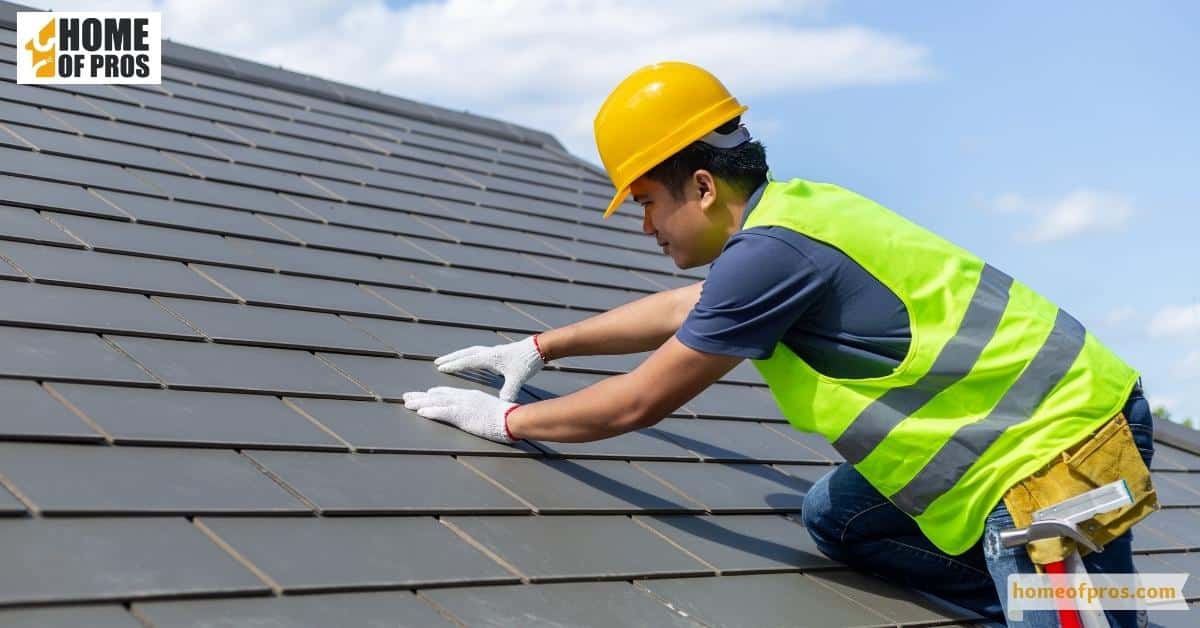If you’re in the market for a new roof, you’ll quickly discover that there are several different styles to choose from. Two of the most popular designs are hip and gable roofs. Both options have their advantages and disadvantages, so it’s important to do your research before making a decision.
Hip and gable roofs are two popular roof designs with distinct advantages and disadvantages. Factors such as cost, design complexity, wind resistance, durability, and energy efficiency should be taken into consideration when comparing the two. Doing your research beforehand will ensure to find a solution that best suits your budget.

What is a Hip Roof?
A hip roof, also known as a hipped roof, is a specific type of roof design where all sides slope downward toward the walls of the house. Essentially, this means there are no vertical ends or flat sides on the roof. It’s a design that’s often seen in church buildings, but it’s also popular in residential architecture.
The term “hip” in hip roof refers to the external angle at which the sloping sides meet. At the top of the roof, where all the sloped sides meet, is a horizontal ridge.
One of the main advantages of a hip roof is its stability. The slope design on all sides of the structure helps solidify the structure’s exterior, making it more resilient to natural elements such as wind and rain. This makes the hip roof one of the most wind-resistant roofs.

What is a Gable Roof?
A gable roof, also known as a pitched or peaked roof, has a triangular shape with two sloping sides that come together at a ridge, creating end walls with a triangular extension, known as a gable. It’s one of the most common roof styles in the US, known for its simple design and efficient water-shedding abilities.
The two sloping sides of a gable roof are essentially the same length, and meet in the middle of the structure at a similar angle, forming the classic triangular shape. This design leaves two flat, triangle-shaped sections on either side of the home, between the roof’s eaves and ridge.

Advantages and Disadvantages of Hip Roofs
Hip roofs come with their own set of pros and cons that can greatly influence a homeowner’s decision. These key points range from the roof’s durability and stability to its design complexity and cost.
In this section, we’ll delve into the various advantages and disadvantages of hip roofs to provide a comprehensive understanding of this popular roof style.
Advantages and Disadvantages of Gable Roofs
Just like their hip counterparts, gable roofs also present a unique set of advantages and drawbacks that can influence a homeowner’s choice. Factors such as cost, ease of construction, and weather resilience come into play. So, let’s take a closer look at these aspects to gain a more comprehensive understanding of gable roofs.
| Advantages of Gable Roofs | Disadvantages of Gable Roofs |
|---|---|
| 1. Easy and cheap to build due to their simple design. | 1. Can be problematic in high wind and hurricane areas. |
| 2. Provides more space for the attic or vaulted ceilings and easy ventilation. | 2. If poorly constructed with inadequate support, they can collapse. |
| 3. Water and snow can easily slide off due to the steep pitch. | 3. The roof’s end can cause a build-up of pressure which can lead to the roof peeling away. |
| 4. They can be designed in various ways, making them versatile. | 4. There is a risk of the roof lifting off in strong winds if there is not enough pitch. |
Cost Comparison Between Hip and Gable Roofs
It’s important to note that the costs of roofs can vary widely based on factors such as the size of your home, the materials you choose, and labor costs in your area. However, here’s a simplified table to give you a basic understanding:
| Roof Type | Average Cost (Per Square Foot) | Notes |
|---|---|---|
| Gable Roof | $3.50 – $6.50 | Costs can vary based on the material type and complexity of the roof design. |
| Hip Roof | $4.00 – $8.00 | Generally, hip roofs are more expensive due to their complex structure and the additional materials required. |
Remember, these are estimated costs and actual prices can vary. Always get a few quotes from trusted professionals before making a decision. A more expensive roof may end up being cheaper in the long run if it’s more durable or requires less maintenance.
Choosing the Right Roof for Your Home
When it comes to the financial aspect of roof selection, the hip and gable roof’s cost comparison plays a crucial role. Often, the choice boils down to balancing between immediate costs and potential long-term savings.
Understanding the cost implications of both roof styles can help you make a decision that aligns with your budget without compromising on the roof’s quality or your home’s aesthetic appeal.
Initial Construction Cost
For the most part, gable roofs have an edge in terms of initial construction cost. Since they require fewer materials and labor than hip roofs do, their installation fees tend to be lower. Moreover, due to their simpler design, gable roofs are easier to build and therefore sped up the process. This makes them a great choice for those looking for a more cost-effective solution.

Maintenance and Repairs
Hip roofs, on the other hand, are more expensive to construct but can often save homeowners money over time. Since they have less surface area than gable roofs, hip roofs require fewer repairs and maintenance fees. What’s more, their complex design helps keep them durable and resilient against harsh weather conditions.

Long-term Value
When looking at long-term value, hip roofs are a great option. The additional initial costs associated with the construction of a hip roof can be offset by its enhanced durability and wind resistance. Depending on your specific needs, this could make the hip roof more attractive than the gable roof in terms of overall value for money.

Cost-effectiveness and Energy Efficiency
The cost-effectiveness of the two roof styles can also be evaluated in terms of energy efficiency. Gable roofs tend to be more popular due to their affordability and ease of installation.
However, they often lack the insulation that hip roofs provide, making them less energy-efficient over time. For those looking for an environmentally friendly and cost-effective solution, hip roofs are the better choice.

Insurance Considerations
Homeowners also need to take insurance considerations into account when selecting between hip and gable roofs. Generally, hip roofs are a safer bet in terms of providing better protection against harsh weather conditions like wind and rain. This means that insurers often offer lower premiums for homes with hip roofs than those with gable roofs.

In conclusion
When it comes to choosing between hip and gable roofs, the decision ultimately boils down to your individual needs and preferences. Gable roofs tend to be more affordable while hip roofs offer superior wind resistance and insulation.
Ultimately, it’s important to weigh all of the advantages and disadvantages before making a decision that best suits you and your budget.
From cost comparison to energy efficiency, understanding the important differences between hip and gable roofs can help you make an informed decision about which one is right for your home.












